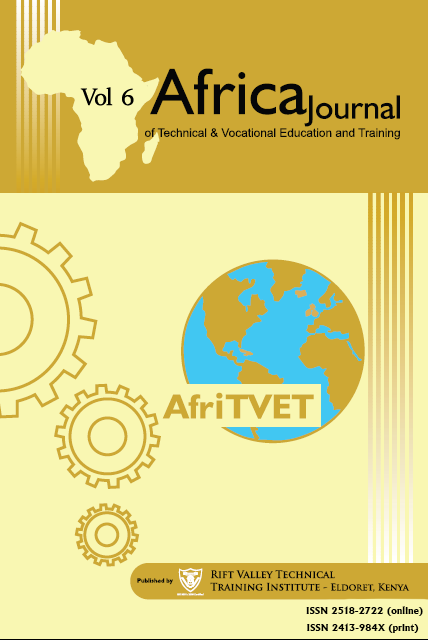Eradicating Cuscuta Invasive Killer Weeds for Environmental Sustainability
Abstract
Cuscuta also referred to as (dodder) belongs to a genus of more than 200 species of obligate aerial parasitic plants in the morning glory family Convolvulaceae. Cuscuta is an invasive killer weed which adversely affects fruit set, and yields and it robs all food from another organism's through its parasitic nature. The organism that is being robbed of its food supply is called the host. Cuscuta invasive killer weed strangles the host plant and is also implicated in the transmission of certain plant bacterial and viral diseases. It is ferociously troublesome where it is sown as a seed contaminant. It is worth noting that, Cuscuta invasive killer weeds is a true vegetal vampire due to its fine stems that stick to its victims hence creating a stranglehold by literally sucking the sap until it kills the plant host. Parasitic plant in particular the Cuscuta weeds, have been described as keystone species by environmentalists. The research objective of this study was to eradicate Cuscuta invasive killer weeds for environmental sustainability. The researcher embarked on a quest on how to get rid of dodder for the small, medium and large scale crop growers and engaged stakeholders such as KEFRI, KEPHIS, and NEMA in developing environmentally friendly mechanisms to exterminate the Cuscuta. Cultural, physical/mechanical biological means of exterminating Cuscuta invasive killer weeds are considered environmentally safe and friendly. Farmers are advised to hand uproot scattered Cuscuta invasive killer weeds.
Article Views and Downloands Counter
References
Agnew, A. D. Q. & Agnew, S. (1994). Upland Kenya Wild Flowers. A flora of the Fems and Herbaceous Flowering Plants of Upland Kenya. 2nd Ed. EANHS, Nairobi-Kenya.
Bardgett, R. D., Smith, R. S., Peacock, S., Simkin, J., & Quirk., H. (2006). Parasitic plants indirectly regulate below-ground properties in grassland ecosystems. Nature 439: 969 - 972.
CAB International. (2005). Crop Protection Compendium, 2005 edition. Wallingford, UK www.cabi.org
CABI Crop Protection Compendium online data sheet. Cuscuta campestris (field dodder). CABI Publishing 2011.
Costea, M., & Tardif, F.J., (2006). Biology of Canadian weeds. Cuscuta campestris
Mishra, J. S., Moorthy B. T. S., & Manish, B. (2005). Efficacy of herbicides against field dodder (Cuscuta campestris) in lentil, chickpea and linseed. Indian Journal of Weed Science, 37(3/4):220-224.
Nickrent, D. L. (2002). Chapter 3. Phylogenetic Origins of Parasitic Plants. LopezSaez., J. A., Catalan, P. & Saez, L. (Eds). Parasitic Plants of the Iberian Peninsula and Balearic Islands. Mundi-Prensa, Madrid. Pp. 29-56.
Nickrent, D. (2009). Parasitic http://www.parasiticplants.siu.edu/plant connection. Website
Nicol, J., Muston, S., D'Santos, P., McCarthy, B., Zukowski, S., (2007). Impact of sheep grazing on the soil seed bank of a managed ephemeral wetland: implications for management. Australian Journal ofBotany, 55(2):103-109.
Pamplona-Roger, G. D. (2000). Encyclopedia of Medicinal Plants. Vol. 1. Education and Health Library. ISBN: 84-7208-158-3
Parker, C. & Riches, C. (1993). Parasitic Weeds of the World: Biology and Control. Wallingford: CAB International
Pennings, S. C., & Callaway. R. M. (2002). Parasitic plants: Parallels and contrasts with herbivores. Oecologia 131: 479 - 489.
Press, M. C., & G. K. Phoenix. G. K.(2005). Impacts of parasitic plants on natural communities. New Phytologist 166: 737 - 751.
Rice, P. M. (2009). INVADERS database system [online]. Website http://invader.dbs.umt.edu
USDA, APHIS [Animal and Plant Health Inspection Service]. (2006). Plant protection and quarantine. Federal noxious weed list [online]. Website www.aphis.usda. gov/plant_health/plant_pest_info/weeds [accessed 8 April 2009]. Wikipedia contributors. "Cuscuta campestris." Wikipedia, The Free Encyclopedia.
Yuncker, C. Jayasinghe, C., Wijesundara, D. S. A., Tennekoon, K. U. & Marambe, B. (2004). Cuscuta species in the lowlands of Sri Lanka, their host range and host parasite association. Trop. Agric. Res. 16:223-241.
Copyright (c) 2021 Africa Journal of Technical and Vocational Education and Training

This work is licensed under a Creative Commons Attribution-NonCommercial-ShareAlike 4.0 International License.
Copyright Notice Copyright of published articles is held by AfriTVET. No limitation will be placed on the personal freedom of authors to copy or to use in subsequent work, material contained in their papers. Please contact the Publisher for clarification if you are unsure of the use of copyright material. Apart from fair dealing for the purposes of research and private study, or criticism and or review, this publication may only be reproduced, stored or transmitted, in any form or by any means, with the prior permission in writing of the Publishers.


